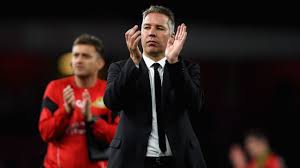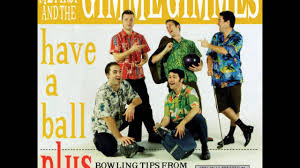A foreign language can be exactly that to many people “foreign”. Despite that fact, there are lessons to be learned and applied from the study of language that reach into the sports world extremely easily. At the highest level, the margin for error is so slim that all possible advantages must be explored.

- Language is an agreement – This is crucial. Right now you (the reader) and I are working under the English agreement. We must agree in order for messages to travel freely and easily. This is simple when we’re talking about identifying a table or a ball. However this idea goes much deeper. It involves vocabulary, tone, context and audience. As a coach, when you address the team, it leaves your lips as one message but gets received eleven or more different ways. This recognition by itself can be powerful but knowing your receivers can allow you to improve your messages. Your business is results. Anyone can bark orders. Not everyone can craft a message. So learn to give the message in a way that will be received.
- You’re doing it to yourself – It doesn’t exist in every language but in several, there is a construction called a reflexive verb. This is when the person doing the action is also receiving the action. Think of washing your hair, brushing your teeth or shaving. In Spanish there is a verb “ponerse”. It means “to put on”. Although it can be used for clothing, it also gets used for emotions. You put anger onto yourself or sadness or excitement. Even though your language may not represent it that way, it is exactly what happens. You and your players are making yourselves feel a certain way. Feelings don’t infect us. We create them. Do your players put excitement on by themselves at training or matches? Or do they need your help? As the person who will eventually be held accountable for the results of the team, it is important to consider what emotions are continually being put onto everyone involved. Can you direct that more effectively?
- Permanent/Consistent or Temporary – Much like the last concept, language frames the way that we look at the world. In Spanish, there are two words for the word “to be”: Ser and Estar. Ser is used for things that are permanent or consistent. Estar is used for things that are temporary. In English it is possible for someone to say “I am depressed.” Since there is only one word for “to be”, this could be a temporary thing or a long term. The signal to other people and the mind can be difficult to decipher. This overlaps with the concept above about agreement. “John is horrible” and “John is having a horrible day” have very different meanings to both the sender and receiver. In your team’s culture, what ideas or concepts do you want to be permanent/consistent? What is meant to be temporary? Listen to your players’ language patterns when they talk about themselves and others. Are there patterns that are undermining success? Are you the one who put them there or did you allow them to stay?
- Slow Process vs. Fast Process – Languages are broken into four different modalities: reading, writing, listening and speaking. Reading and writing are slow processes that allow the person to take their time as they are doing it. Listening and speaking are done in real time. Therefore each can be more valuable at different times or may be used in tandem. Consider the importance of the message that you want to send. Is saying it enough? Remember, you already know the message that you want them to receive. So be sure to give them the opportunity to get it with the amount of depth that you intend for it. Should you write it down for them to see it? Should they write it down in their own words? In their own language? Your players are going to be performing in a high stress environment. Make sure that the messages that matter stick.
- Question Words Require Extra – Who? What? ¿Dónde? Quand? Jak? And WHY? Although there may be times when all you want is the simple yes or no, your players are complex creatures who have lives beyond the game. Probing beyond the surface level may be the key to unlocking a level of focus and commitment that you never knew existed from an individual. Yes men are easy to find and easy to replace. Although all question words elicit extra information, they are not all created equal. WHY is the eventual question that you want to find an answer for. If you know a player’s WHY and are able to link it to the team’s goals, you’ll have a brother in arms rather than a mercenary. One of my favorite illustrations of the concept of WHY comes from the movie Cinderella Man (2:00 minutes in). He says what he’s fighting for but it puts his WHY on full display.
In the world of professional soccer, everyone’s job is to prepare to the best of their ability in order to achieve a result on game day. Coaches are using words as their main tool to get the most from their players. Despite that fact, language patterns and word choice rarely get considered. The best version of you as a coach requires that you and your players understand one another. Be sure that your message is not being lost in translation.
